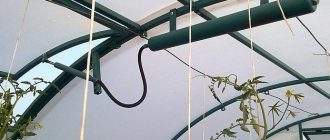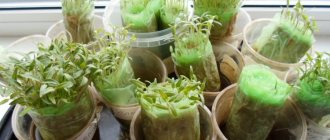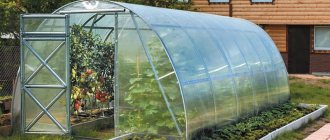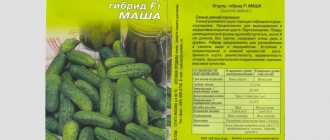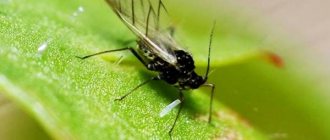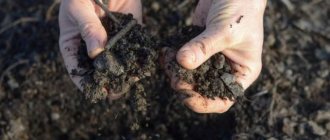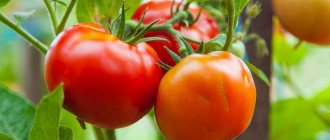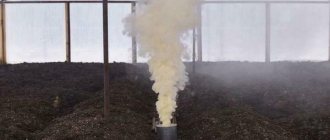Did you know that most diseases of vegetable crops are transmitted through planting material? Therefore, in order to get a healthy plant that bears fruit well, you need to properly prepare the seeds for sowing.
Before sowing seeds, the first thing you need to do is disinfect them so that you don’t have to fight dangerous diseases in the future. After all, planting material may contain, for example, fungal spores. Only pelleted and inlaid planting material does not need processing.
Thermal treatment of seeds
Heat treatment (warming in hot water) is done as follows: place the seeds in a gauze bag and lower it into a thermos for 20-30 minutes. And after this time, immediately place it under cold water for 2-3 minutes. Please note that deviations from this regime may have a detrimental effect on the quality of planting material!
Keep the seeds in a thermos for no more than 30 minutes
Seed heat treatment mode
| Culture | Temperature (°C) | Time (min) |
| Cabbage | 52-54 | 20 |
| Radish | 52-54 | 20 |
| Turnip | 52-54 | 20 |
| Swede | 52-54 | 20 |
| Tomato | 50-52 | 30 |
| Physalis | 50-52 | 30 |
| Eggplant | 50-52 | 25 |
| Beet | 48-50 | 25 |
During disinfection, about 30% of seeds may lose their viability. And this is normal: only non-viable specimens die during heat treatment.
How to calibrate planting material
The grain calibration procedure has one goal - to prepare and separate good-quality seeds from weak and “empty” seeds to increase the percentage of overall seed germination. Both collected grains that you prepared yourself and purchased copies are allowed for inspection.
The process is based on the ability of weak seeds to rise to the surface of the water over time, while good quality ones remain at the bottom.
The procedure is simple and is performed according to the following scheme:
- Prepare a saline solution in the range of 3-5% (this is about 3-5 grams of salt per 100 ml of water).
- The seed fund is lowered into the resulting saline solution. Then wait about 10 minutes - by this time the weakest seeds float to the surface of the water.
- The remaining seeds are washed with clean water and dried thoroughly to prevent premature germination.
AN ALTERNATIVE METHOD OF CHECKING - replacing salt with manganese solution for a disinfecting effect.
Seed dressing
Before planting, seeds should be pickled in a weak (1-2%) solution of potassium permanganate (potassium permanganate).
Potassium permanganate disinfects seeds
Seed treatment mode
Celery, onions, lettuce, radishes, tomatoes, physalis, legumes and corn are pickled in a 1% solution of potassium permanganate for 45 minutes. And eggplant, peppers, carrots, cabbage, dill and pumpkin - in a 2% solution for 20 minutes.
If you want to treat a large number of seeds at one time, use chemicals specially designed for this: for example, Commander, Bunker, Baitan, Winner, Raxil, Fundazol, etc.
After dressing with chemicals, be sure to rinse the seeds with running water at room temperature.
How to disinfect seeds
Disinfection of seeds is carried out for one purpose - to destroy fungi and other pathogens that are somehow found in the seed. Disinfection of seed should be carried out not only for personally collected material, but also for purchased material - the manufacturer cannot guarantee healthy seed due to intermediaries.
Among the effective methods of disinfection are the following.
Through potassium permanganate
The processing procedure is carried out according to the following scheme:
- Prepare a solution at the rate of 1 gram of potassium permanganate per 100 milliliters of water (1%).
- Place the seeds in the solution for 20-40 minutes.
- After processing, the seeds must be thoroughly washed and dried.
REFERENCE. All vegetable and flower crops can be processed in a similar way - only the required percentage of potassium permanganate and the duration of treatment may differ in the procedure due to the characteristics of a particular plant.
Through hydrogen peroxide
This disinfection method is as follows:
- 3% hydrogen peroxide is placed in a container suitable for heating and heated to 35-40 degrees Celsius.
- After heating, the seeds are soaked in peroxide for about 5-9 minutes.
- After treatment, it is advisable to rinse the seed with clean water and dry it before planting.
IMPORTANT! Such treatment before planting increases the growth rate of seedlings, and also disinfects the surface of the grain and lowers the level of nitrates.
Using the drug chlorhexidine
Treatment with a 0.05% chlorhexidine preparation is carried out as follows: any dense fabric is moistened with the solution, the seed fund is placed on it and left for about half an hour. This drug is good because it has a complex disinfecting effect and increases the germination of grains.
Soaking the seeds
Before planting, the seeds are not only disinfected, but also soaked in melt or rain water. Thanks to this, they rise quickly and amicably.
Freeze plain water and then place the ice in a wide enough bowl, let it melt, then come to room temperature and drop the seeds in there. Legumes are soaked for 6-7 hours, cabbage, tomatoes and cucumbers - 17-19 hours, and onions and celery must be kept in water for 35 hours. At the same time, do not spare the liquid: the seeds should be completely immersed in it.
Soaking allows seeds to germinate faster
To further stimulate seed germination, biological products can be added to the water: Epin, Heteroauxin, Humate. If you are soaking the seeds of eggplant, tomato, cabbage or lettuce, you can add aloe juice to the water. It stimulates the germination of seeds of these crops well.
If the seeds are soaked for more than 10 hours, then the water needs to be changed every 3-4 hours so that it is enriched with oxygen and does not spoil.
After soaking, the seeds are slightly dried and immediately sown in the soil. This will ensure their rapid and friendly germination.
What seeds are bubbled and how to carry out the procedure
The essence of bubbling is to saturate the seeds with oxygen and remove the protective shell. On average, seed germination time is reduced by 8-12 days.
The procedure is performed with a specialized bubbler or a regular aquarium compressor. Let's look at the process using an example of using an aquarium compressor:
- A container of suitable size for the procedure is filled with clean filtered water.
- Seeds calibrated (sorted) for planting are placed at the bottom of the container.
- The air outlet tube is placed in a container of water and the compressor is turned on.
The duration of the procedure depends on the specific plant.
- Approximately 5-6 hours for legume seeds.
- Approximately 9-11 hours for salads and radishes.
- Range from 12 to 18 hours for strawberry and tomato seeds.
- +- 18 hours are required for melon, cucumber, parsley or dill seeds.
- Onion and carrot seeds require about 21-23 hours.
- The bubbling period for watermelon and pepper seeds is about 24-36 hours.
IMPORTANT! It is advisable to carry out bubbling before planting seeds - otherwise, only damage to the seeds is expected, which will make it impossible for them to grow in the future.
Hardening of seeds
To increase the cold resistance of seeds of heat-loving crops, the seed must be hardened. To do this, first place the seeds in bags and soak in water (eggplants, tomatoes, peppers - for 12 hours, all pumpkin seeds - for 6 hours). Then remove from the water, keep at a temperature of 15-20°C for 12 hours, and then leave for the same time in a room with a temperature of 1-3°C (can be placed in the refrigerator).
Seeds that have been hardened can be sown in open ground a couple of days earlier
How to check planting material for germination.
Calibration identifies the most low-quality seeds - damaged, expired or low-quality specimens may remain in the pack. Seeds can be tested for germination in two ways.
Sowing some of the seeds in the ground
This verification method consists of the following scheme:
- Prepare a container with soil and a separate amount of earth for backfilling.
- Plant the seeds in a nominal quantity of 10 pieces into the ground and moisten them after filling.
- Then the container is covered with cling film or polyethylene - for reliability of testing, the planting date, number and type of seeds are written on paper (if different types of plants are being checked).
- After germination, the result is compared with the number of seeds used and their planting date - this determines the percentage of germination and the quality of the grains.
Laying out part of the planting material on fabric
A faster way to verify the germination of seeds is to lay out some of the seeds on a cloth according to the following diagram:
- Prepare any thick cloth or paper towel.
- Seeds, in a nominal quantity of 10 pieces, are carefully laid out on a cloth, moistened with water and covered with a damp towel.
- The fabric must be constantly moistened for a week until the seed germinates.
- To increase the growth of tested specimens, you can use biological growth stimulants, bubbling and hardening of seeds - this allows you to improve the quality of seedlings and material.
Vernalization (cooling) of seeds
This technique accelerates the germination of cold-resistant crops. It is most often used for carrots, parsley and parsnips. The seeds are first soaked in water at room temperature until completely swollen, then germinated on a damp cloth until 10-15% of the seed has hatched. After which the seeds are kept at a temperature of 0 to 1°C for two weeks.
It is not recommended to prepare beet, lettuce and spinach seeds for sowing in this way, since then they will develop flowering stems prematurely.
Germination of planting material
Pre-germination of grains before planting is carried out for one purpose - faster germination after planting in the ground. It is worth noting that you can combine the process of germination of some plants, for example, with disinfection and the addition of a growth stimulator. The process itself can be carried out according to the general scheme, adjusting the procedure depending on the culture.
- Prepare any fabric. For example, gauze. The seeds are laid out between two layers.
- The fabric itself must be constantly moistened, maintaining a balance - avoid drying out and being overly wet.
- The seeds hatch at an average temperature of 20-25 degrees Celsius and, after completion of the process, are planted in the soil, which should be prepared for planting in advance.
Scarification of seeds
Usually the seeds of perennials, which have a very dense shell that prevents the appearance of a sprout, are scarified. To break the integrity of this shell, the seeds are ground with sand, between sheets of sandpaper, or immersed in hot water (up to 70°C) for several minutes.
The last two methods of preparing seeds for sowing are optional; they are not used for all crops. But you can’t do without sorting, dressing and soaking if you want to get friendly and healthy seedlings of any plants.
What is panning?
Pelleting is the process of forming a nutritious protective shell around a seed to prevent possible damage and at the same time provide useful substances to the germinating sprout. The composition of such a shell is different for certain plants - mainly mullein, nitrogen and potassium fertilizers, peat and other useful micro-macroelements are used.
Pelleting has 3 purposes;
- Prepare a nutrient medium for better and faster growth.
- Prepare the protection of seed material from damage during storage and planting, as well as reduce the risk of plant diseases.
- If the pelleting technology is followed, the seed “capsules” are stored longer and have a higher germination rate when planted.
Flower crops
Growing flowering and decorative deciduous crops is no more difficult than cultivating fruit-bearing crops, but it also has its own nuances. Both perennials and annuals can be grown using seedlings. Sometimes biennial flower varieties have time to produce buds and bloom during the first year of life, having been sown with seeds in the ground.
If you want to be guaranteed to receive flowers earlier, then it makes sense to plant already matured “pets” in the flowerbed.
During the preparation process, be sure to pay attention to the volume of containers in accordance with the development of the root system, the tolerance of transplantation, as well as how long the plants will remain in the selected container. For example, crops with a long taproot do not tolerate replanting manipulations even with a gentle transfer method and react sharply to the slightest damage to the roots, so deep cardboard or peat-humus pots are selected for cultivation, and then planted in the ground without removing the plants from them.
The approximate timing of sowing work is indicated in the table:
| Name | Sowing | Bloom |
| Begonia everblooming | January | April – September |
| Ageratum | January February | June – October |
| Verbena | February March | June August |
| Levkoy | July August | |
| Lobelia | July – September | |
| Snapdragon | June – September | |
| Petunia | June – October | |
| Salvia | June – October | |
| Phlox Drummond | June – September | |
| Chinese carnation | March | June – September |
| Celosia | July August | |
| Chinese aster | March, April | July – October |
| Dahlia annual | July – October | |
| Iberis | June August | |
| Kochia | June August | |
| Fragrant tobacco | July – October | |
| Cineraria | Aug. Sept | |
| Marigold | April | June – October |
| Lavatera | June – October |
Some popular annuals, for example, lobelia (pictured), petunia, nemesia, bacopa, diascia, are usually cultivated exclusively by seedlings
In what cases are biostimulants used when preparing seeds for planting?
Biological growth stimulants, although they are designed to facilitate the process of seed growth and improve the quality of the future plant, cases of their use should be distinguished:
- In cases where the soil is rich in various substances and elements, the use of biological additives is not recommended - it is possible to upset the balance of substances in the soil, which will result in more negative consequences.
- Also, before adding natural additives to the soil, you should remember the measure - different crops require different amounts of additives and if the threshold is exceeded, it is possible to create the opposite situation when the sprouts die from an excess of substances (for example, nitrogen).
- When using pelleted seeds, adding biostimulants to the soil is not necessary - feeding mixtures are added during the plant growth process.
- You should be careful about the use of biostimulants when planting plants - some crops are not liked, for example, mullein or bird droppings. It is also possible that there remains a strong smell of droppings or pathogens that have passed through the animal’s intestines (although this is unlikely).
Growing season
The time from germination to harvest is called the growing season. The duration of this period varies among plants; moreover, it can be different for varieties of the same species - hence the division of varieties into early-ripening, mid-ripening and late-ripening.
Early-ripening varieties need much less time to ripen than late- and mid-ripening varieties. As a rule, in the middle zone, plants with a longer growing season are grown by seedlings so that they have time to produce a harvest.
Seed producers usually indicate on the packaging information about the length of the growing season of the crop. On average, the growing season lasts:
| Vegetable crop | Average length of growing season (days) |
| Eggplant | 100-120 |
| Zucchini | 40-60 |
| White cabbage | 50-200 |
| Cauliflower | 70-120 |
| Cucumber | 35-60 |
| Pepper | 80-120 |
| Celery | 80-180 |
| Tomato | 90-130 |
| Pumpkin | 90-130 |
This indicator depends on many circumstances: seed storage conditions, biological characteristics of the vegetable crop, growing conditions, etc.
Choosing the optimal timing
In January , they sow mainly “long-term” flowers (for example, eustoma), garden strawberries, and late-ripening varieties of some vegetables with a development period of more than 120 days.
In February it is the turn of perennial and onions, leeks, celery, sorrel, asparagus, rhubarb, viola, heliotrope, primrose, and tuberous begonia.
With the arrival of March , they begin sowing root crops (beets, horseradish, radishes), nightshades (eggplants, bell peppers, tomatoes), greens (lettuce, onions, parsley, basil and other herbs), different types of cabbage (white cabbage, cauliflower, broccoli, kohlrabi), petiole celery, floral and ornamental plants: verbena, petunias, marigolds, zinnia, echinacea, annual dahlias (and other representatives of the asteraceae), mathiola, Drummond phlox, ageratum, alyssum, iberis, garden bell, antirrhinum.
In most regions, March is considered the optimal period for sowing petunias and other popular annual flowers.
There is no need to rush to sow early and fast-germinating varieties of vegetables in the spring, or delicate flower cultivars that do not like cold weather (delphinium, godetia).
In April, it’s time to think about preparing pumpkin and melons, legumes, early root vegetables, varieties with a short growing season, greens and flowers.
Gardeners who plan to plant seeds for seedlings in 2022 in accordance with the lunar sowing calendar can use tips on choosing the most favorable days.
Full cycle of growing seedlings: from sowing to planting in open ground
Seed preparation
Seed preparation includes several stages.
- Checking the required quantity and expiration date
It is advisable to do this somewhat earlier than the expected sowing in order to have time to replenish supplies.
- Germination test
Some of the seeds from each bag are placed on a damp cloth and germinated. After a few days (each crop has its own germination period), the percentage of sprouts is calculated.
If the germination rate is less than 50%, such seed either should not be used at all, or stocks will have to be increased to adjust for culling.
- Selection and calibration
Selecting equally large seeds will result in a more predictable and abundant harvest. Therefore, some gardeners, especially those who collect planting material exclusively from their plots, pay great attention to calibration.
If the seeds are small and it takes a long time to compare them manually, the selection of seeds can be done as follows: soak in 3% (cucumbers) or 5% (tomatoes, eggplant, bell peppers) salt solution for 5 minutes and throw away everything that floats to the surface without regret.
Those that sank are washed under running water, dried and used for their intended purpose. If desired, you can choose the largest of them.
Important note: in this way, you can only check the germination of fresh cucumber seeds, since after lying for some time, they dry out and float, despite their good quality. Peas, beans and corn are soaked in ordinary cold water.
- Disinfection
All seeds, except those that have been processed by an agricultural company (this is indicated on the package), must be disinfected. In most cases, it is the contaminated material that is to blame for vegetable diseases.
Disinfection is carried out in two ways: by heating and etching in a solution of potassium permanganate. Warm the seeds in a thermos with hot water for the recommended number of minutes, and then transfer them to cold water for a couple of minutes.
This method has two disadvantages: some of the seeds lose their germination and the temperature must be strictly maintained for a certain time.
Heating mode for some crops: cabbage - 20 minutes at 52 - 54 °C, eggplant - 25 minutes at 50 - 52 °C, tomato - 30 minutes at 50 - 52 °C.
Disinfection with potassium permanganate is carried out for 45 minutes in a 1% solution (tomatoes) or 20 minutes in a 2% solution (peppers, cabbage, melons).
The disadvantages of the method include the need to strictly adhere to the proportion of the solution, which is quite difficult at home.
It is more convenient to disinfect in any way if you place the seeds in a gauze or calico bag.
- Soaking in water
Soaking accelerates the germination of sluggishly germinating crops such as carrots and peppers. But all the rest can also be immersed in water for better germination.
It is enough to place peas and beans for just a couple of hours; tomatoes, cucumbers and cabbage will need about 12, and carrots – as much as 1.5 days. During prolonged soaking, the water must be changed and the seeds must be mixed. You can also soak in a solution of growth stimulants (aloe juice, epin, humate, etc.)
- Germination
After soaking, the seeds can be immediately sown in the ground, but it is more effective to germinate them first. To do this, they are placed on a damp cloth at room temperature or slightly higher and stored until sprouts appear. Now you can select the most viable ones and carefully place them in the prepared soil. And you can increase cold resistance by vernalization.
- Vernalization
This is the name given to hardening seeds at low positive or zero temperatures. Sprouted seeds (just wait for the first shoots) are placed in the refrigerator or in the snow for a certain time. For example, cabbage is kept for 10 to 15 days at 0 – 3 degrees.
Vernalization can be carried out for cabbage, celery, onions, carrots, parsley, chrysanthemums and is not recommended for turnips, cabbage, beets, radishes, rutabaga.
Sowing
Each vegetable or flower has its own requirements for planting time and conditions. The container is filled with prepared soil, compacted and leaving a little space on top, watered generously and the seed is placed. The larger its size, the thicker the layer of earth should be above it.
Some small seeds (for example, petunias) do not fall asleep at all. After sowing, the container is covered with polyethylene and placed in a warm place until germination. Some seeds germinate in any light, others (petunias, ageratum, snapdragons) require diffused light, and some (verbena, phlox) require complete darkness.
Picking
Picking is transplanting a plant into a large container to develop the root system. Thus, the young sprout not only receives more nutrients, but also slightly reduces its growth, which means it stops stretching. The gardener gets the opportunity to inspect the roots, remove rotten ones, and generally carry out an inspection on the windowsill and get rid of weak specimens.
You don’t have to pick and sow the seeds directly into individual pots. Some plants, for example, eggplants, squash, pumpkins, melons, watermelons, do not like “moving” and may get sick. The survival rate of pepper after picking varies among gardeners. But most vegetables respond to the procedure with a better harvest.
As for pinching the spine, opinions differ on this matter. Some advise shortening the root by a third to form lateral roots, others do not recommend doing this.
Most often, seedlings with a small lump of earth are planted without disturbing the root system. This method is called transshipment. For tomatoes, multiple transshipment is allowed, since they give a good harvest.
Approximate picking times for some crops:
- tomatoes: 10 – 15 days;
- peppers: 15 – 20 days;
- cucumbers: 5 – 7 days;
- white cabbage: 7 – 8 days;
- broccoli: 9 – 10 days.
Top dressing
Often the nutrients that were in the soil when planting are not enough for the plant. Over a long period of time in the pot, it manages to use up its reserves and needs a new supply of food.
The use of complex fertilizer is not always justified, since one of its components may already be in the soil, and an excess is just as harmful as a deficiency. Therefore, it is often recommended to resort to single-component fertilizers.
You can notice what exactly the plant lacks by the following signs:
- phosphorus - the stem darkens, the leaves curl and fall off;
- potassium - white spots appear on the lower leaves, the upper ones either do not grow at all, or turn out to be very small and covered with rust;
- nitrogen - the lower leaves turn yellow, the plant slows down.
| A quick guide to feeding some plants | ||||
| Culture | 1st feeding | 2nd feeding | 3rd feeding | 4th feeding |
| Tomatoes | In the phase of three true leaves (nitrogen, phosphorus, potassium) | Two weeks after picking (nitrogen, phosphorus, potassium) | Two weeks after the previous feeding (nitrogen, phosphorus, potassium) | At 60 days of age (phosphorus, potassium) |
| bell pepper | After the appearance of the first true leaf (urea) | 20 days after the first (urea) | A week before planting in the ground (superphosphate) | |
| Cucumber | In the phase of the first true leaf | After 14 days (complex fertilizer) | ||
| Cabbage | A week after picking (diluted bird droppings) | A week before planting in a permanent place (superphosphate with soot) | ||
| Flowers | A week after the pick (nitroammophoska) | Once every 10 days with the same composition | ||
Along with industrial products, folk ones are also used for feeding (onion peels, ash, iodine, coffee grounds, eggshells).
Hardening
Harden off seedlings of vegetables and flowers that need a lot of time to ripen. These are tomatoes, peppers, eggplants, squash, pumpkin, cabbage.
Plants adapt to changing conditions gradually: first, the temperature in the house is slightly reduced, then they are ventilated without drafts, and finally, in the spring, they are taken outside for several hours. They are also accustomed to the sun gradually, opening it up to diffused lighting.
Requirement for heat
Thermophilicity is an important factor
Many vegetables that are grown from seedlings love warmth. Except for cabbage. It is able to tolerate relatively low temperatures. And, for example, eggplants are very heat-loving. Therefore, there is no need to rush to land them, even with shelter. It is necessary to wait until there is no longer any risk of possible frost.
Currently, there are new varieties of tomatoes and peppers that have low heat requirements. Their breeders bred them specifically for the northern regions. Frost is destructive for them, although if they are well covered, they can be planted in a summer cottage much earlier than their heat-loving counterparts.
Information with exact dates is nowhere to be found, because weather conditions are unpredictable. Therefore, the importance of this factor should not be ignored, just like the others.
Soil preparation
Each plant has its own “favorite” composition and type of soil. But there are also general rules on how to prepare good soil for seedlings.
- The land must be fertile.
- Minerals and organic substances must be balanced and available for absorption.
- In loose soil, oxygen reaches the roots, which means they grow well.
- It is necessary to maintain the acid-base balance of the environment. For seedlings, as a rule, it ranges from 6.5 to 7.0.
- All roots, metal particles and other unnecessary objects should be removed from the soil.
- The soil must be treated against pests.
What crops are best to germinate with seedlings?
In our country, due to the cold climate, many different crops have to be grown using seedlings, grown for both agricultural and ornamental purposes.
The most popular vegetables are tomatoes, peppers, eggplants and cucumbers. Almost every Russian summer resident sowed these crops for seedlings.
Less commonly, celery, cabbage, pumpkin and zucchini, leeks, and exhibition onions are planted on seedlings.
Some summer residents sow herbs for seedlings: basil, parsley, thyme, lemon balm, etc.
From flower seedlings, lobelia, petunia, eustoma, marigolds, salvia, purslane, zinnia, nasturtium, iberis, kobeya, balsam, etc. are grown.
In general, almost any crop (even potatoes) can be grown with seedlings. It’s just that, in fact, seedlings are a necessary measure, and not a whim of Russian vegetable growers.
